Final Fantasy’s 35-Year Legacy Of Innovation – How Square Evolved A Genre On The NES & SNES

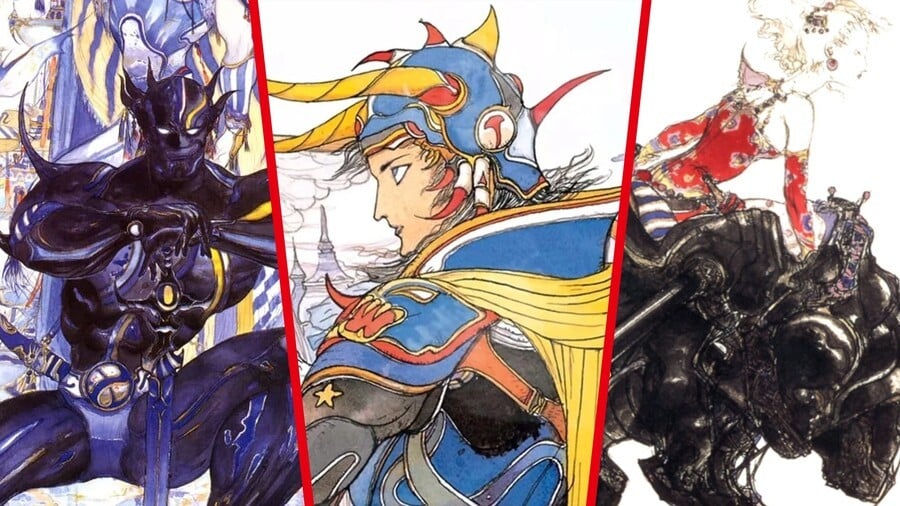
Final Fantasy is now 35 years old, and that feels a little bit weird to say. While not the first RPG series to ever grace a home console or even the first Japanese-developed RPG, Final Fantasy is, arguably, the JRPG. Everyone knows it, and everyone has played at least one.
There’s a lot of debate about what Final Fantasy as a franchise really is, and over the last 20 years, a lot of people have felt disappointed by huge overhauls to combat or setting. But there is no one kind of Final Fantasy. I can’t really think of any other series that has changed as much and as often as Final Fantasy has. Right back to its origins, Final Fantasy has always managed to innovate, iterate, and reinvent.
Final Fantasy has always managed to innovate, reiterate, and reinvent
And where did all of this creativity start? The original Final Fantasy on the Famicom in 1987. Now-legendary series creator Hironobu Sakaguchi had long wanted to make an RPG for Square, but following Dragon Quest’s runaway success in 1986, he seized the opportunity and pushed through the odds to make Final Fantasy happen.
To celebrate this momentous 35th anniversary, I want to look back at the original six Final Fantasy titles and see how each one innovated and reinvented the wheel, paving the way for other RPGs, as well as forging a path ahead to continue to create unique masterpieces.
Final Fantasy I – A Class Act
“The fun in an RPG begins when you create a character, in my mind,” designer and battle director Akitoshi Kawazu told Jeremy Parish in 2012. Inspired by Ultima, Wizardry, and Dungeons & Dragons, the original Final Fantasy was the result of a team of seven people at Squaresoft, headed up by Sakaguchi. The series creator “made a concerted effort to be different” from Dragon Quest, and the game’s job system is perhaps the defining part of that difference.
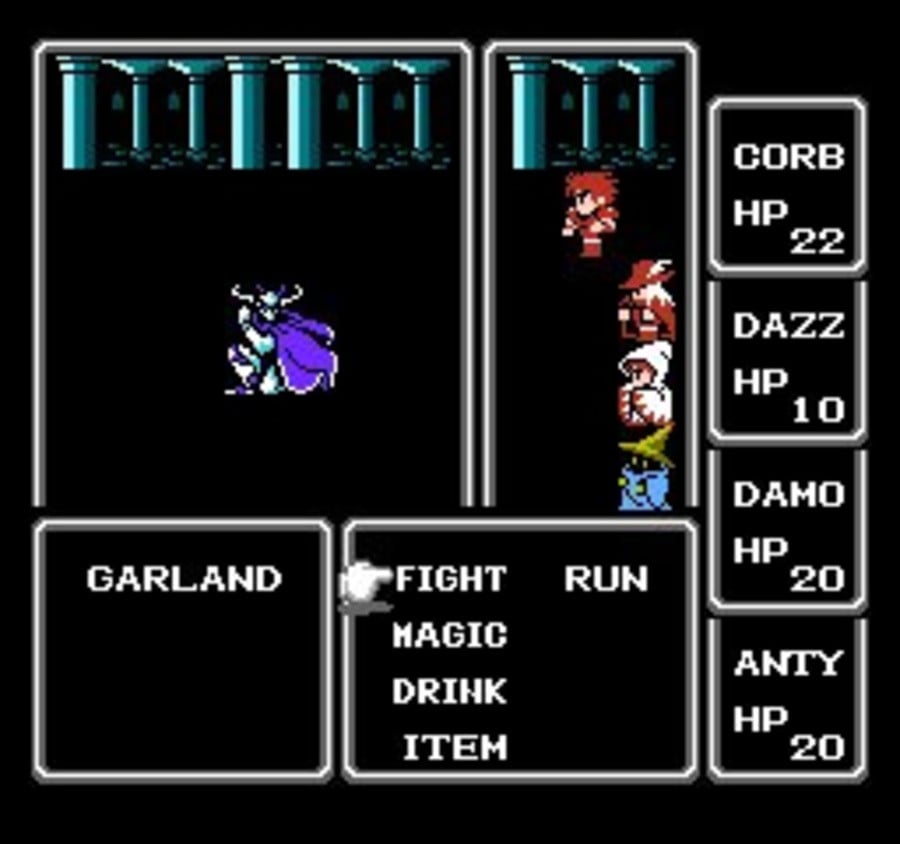
Stylistically Final Fantasy was pretty different from other RPGs of the time. It wasn’t totally medieval and it was more “fantasy”, hence the name. But with the crystals, the four elements, and the in-game class and job designs, it felt very different. Wizardry had done classes and jobs before, but Final Fantasy simplified things, and your four chosen classes all got an upgrade as part of the narrative in the game’s most memorable moment – meeting Bahamut, the King of the Dragons.
Warrior, Thief, Monk, White Mage, Black Mage, and Red Mage. Those are the six original jobs. You’re not playing as a warrior hero in Dragon Quest or the shipwreck-prone Adol in Ys, nope – you’re whoever you want to be.
the game’s job system is perhaps the defining part of that difference.
The job system is one of the most iconic parts of any RPG, and you can make a pretty strong case for Final Fantasy popularising it. Final Fantasy III (no, not the SNES one) improved upon it tenfold by adding more jobs to the game like Summoner, Ranger, Dark Knight, and Dragoon, with Final Fantasy V introducing even more iconic roles like Blue Mage and Samurai. Both games make other improvements to the system, but this is where it started.

Also, ending a time loop? That’s got to be a pretty significant moment in video games back in 1987. Hey, at least in 2022 we all (read: those with a PS4 or PS5) got to kill Chaos.
Final Fantasy II – This is our story
Really, Final Fantasy IV (yes, the SNES number II) is the game that popularised the story-heavy side of Final Fantasy. But Final Fantasy II (the NES one – keep up!) is the one that really started the trend.
In a lot of earlier RPGs, the story was either barebones or the hero was a nameless character that was left for you to superimpose yourself upon. Here, you start off with four distinct characters (you can give them names, but their defaults are Firion, Maria, Guy, and Leon) and, before you even find your feet, you’re thrust into an unwinnable battle and forced to watch your party die in front of you.
Death permeates Final Fantasy II’s story, which focuses on a rebellion army who are fighting against the Emperor and an evil empire. Character’s jobs are set in stone, and the cast all have personalities and motives – basic, sure, but they’re there. But the success of the original Final Fantasy opened up the sequel to a lot more experimentation and a much darker tale where many named characters die (including party members).
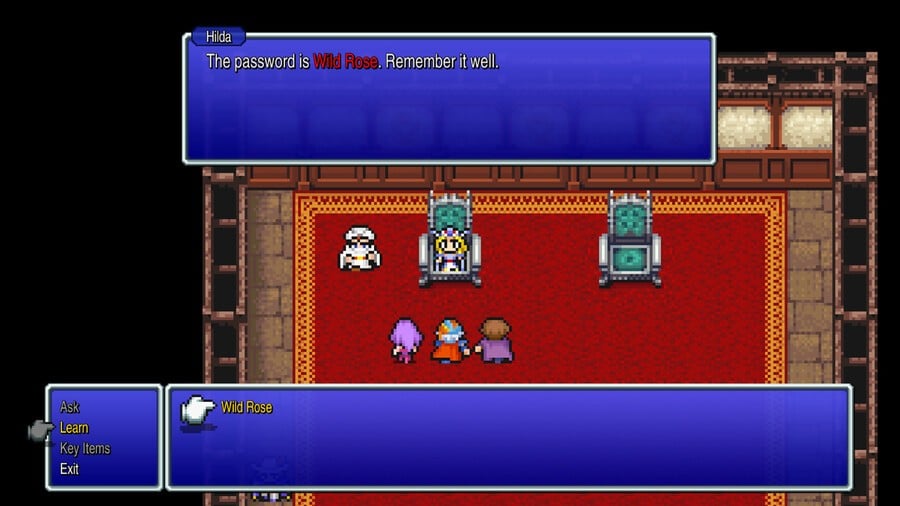
Even though most of the original team returned to make Final Fantasy II, the sequel made some pretty major departures from the first – and not just in having defined characters. I’m dancing around it, but Final Fantasy II is the most divisive entry in the series. The main reason for this is that it’s the only game in the main series that does away with experience points (EXP). Kawazu, again in charge of the battle system, replaced EXP with a reactive kind of levelling. If a character uses a sword a lot, they’ll gradually get better with it. And if a character takes a lot of hits, their HP goes up.
It’s… finicky, to say the least, but it’s the one big part of the early Final Fantasy that Kawazu took with him when he went to develop the SaGa series.
But Final Fantasy II might have established the most Final Fantasy things – chocobos, Cid, the Ultima spell, the Genji armour, the Blood Sword weapon, Leviathan, and the theme of evil empires…
Not every innovation has to stick, which is probably part of the reason why Final Fantasy has never revisited this style of levelling (that and the above with Kawazu) or the keyword system hasn’t really returned. But Final Fantasy II also established a number Final Fantasy staples – chocobos, Cid, the Ultima spell, the Genji armour, the Blood Sword weapon, Leviathan, and the theme of evil empires all came from II.
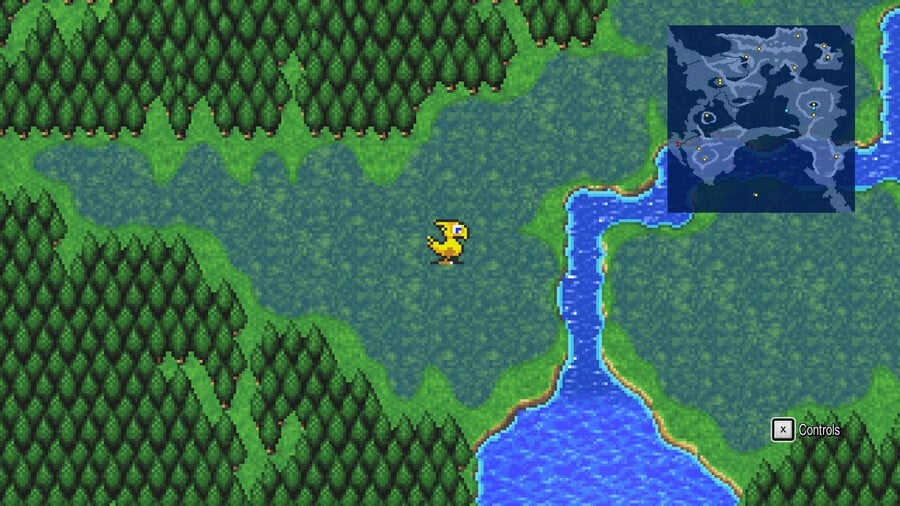
Despite its rocky place in the series’ history, Final Fantasy II was a showcase of the team’s creativity and innovative ideas, and while many series hallmarks have come from this game alone, others were abandoned.
Final Fantasy III – I summon thee
Final Fantasy III – which was actually the last ‘missing’ Final Fantasy game to get an official English version, thanks to a 3D DS remake in 2006 – is a weird one to talk about here. Its defining feature is that it expanded massively on FFI’s job system; there are now 20 jobs instead of just six, and you could swap between them outside of battle. In many ways, Final Fantasy III was a return to what made FFI work so well while improving on those aspects. As FFI was a response to the original Dragon Quest, III was a response to Dragon Quest III, which had a solid class system itself. Final Fantasy wanted to do it better.
Final Fantasy wanted to do it better.
If there are two jobs that feel distinctive and unique to Final Fantasy, I think they were formed here – the Dragoon and the Summoner. So the Dragoon technically was introduced in FFII as an ally named Ricard Highwind, but FFIII is where it really comes into its own, all because of one word: ‘Jump’. Spears and classes that use spears have appeared before in other video games, but the Dragoon is a particular kind of class, one that attacks from the skies and can stay safe from enemy attacks, all with an advantage against aerial enemies.
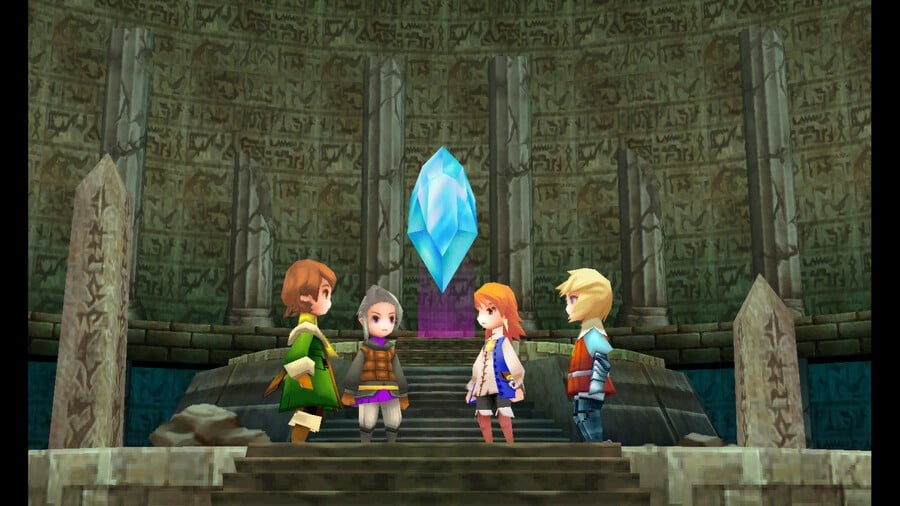
Summoners, however, are even more important. Summons, Aeons, Espers, Eidolons, Astrals, Eikons – Final Fantasy is the series for summoning huge, ethereal creatures. And while other RPGs like Namco’s Tales series or plenty of Western RPGs have had summoners or summon spirits, Final Fantasy’s brand of summons feels special. These creatures are often plot-critical, rely on an enormous amount of power, and make you feel awesome when calling a huge image of an old, wizened man onto the battlefield just to rain thunder upon the field.
why would you fight a giant bird with a knife and not as an armoured, jumping, spear-wielding expert?
The game certainly encouraged you to swap between jobs, but Final Fantasy III also hints to use certain jobs at certain times. There’s a boss that pretty much requires you to play as four Dragoons (it’s possible to win as other jobs, but it’s not fun, let me tell you!). And while things like that are annoying, I think it’s a pretty fascinating way of establishing what a job is without the characters having defined personalities.
After all, why would you fight a giant bird with a knife and not as an armoured, jumping, spear-wielding expert?
Final Fantasy IV – Actively Timed
This is it – arguably, Final Fantasy IV (the first 16-bit SNES entry) is the game that really put Final Fantasy on the map. At least before that pesky eco-warrior Cloud Strife came onto the scene and actually got the Final Fantasy series into Europe…
Final Fantasy IV has, for its time, a pretty beautiful character arc for its main hero, Cecil. A dark knight employed by an evil empire, Cecil spends much of the first part of the game going through a moral dilemma, realising he’s slaughtering innocents all for the sake of his king, culminating in a scene where Cecil, atop the aptly-named Mount Ordeals, atones for his sins and fights his own reflection to become a Paladin.
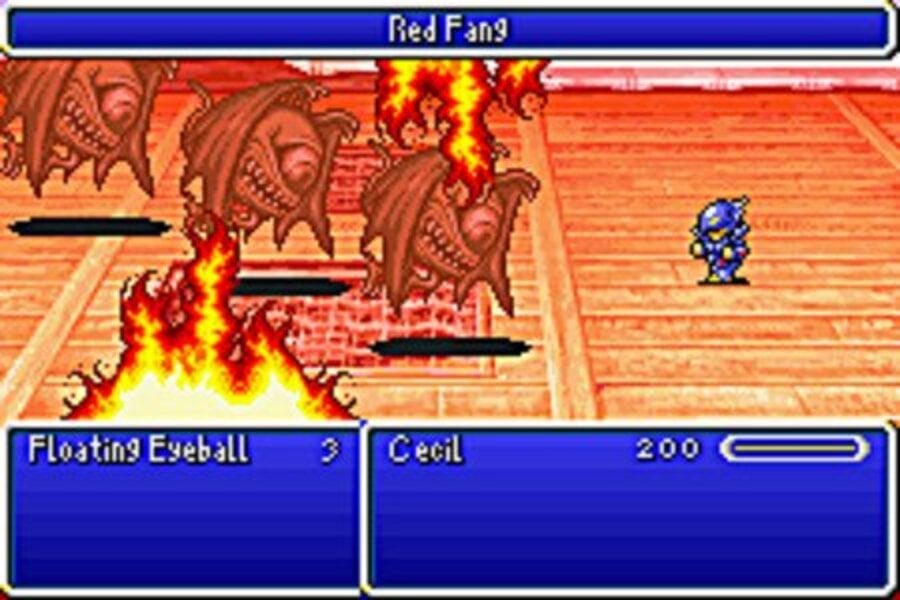
But we’re not really here to talk about the story, as impactful or iconic as it actually is. We’re here to talk about perhaps the most important thing Final Fantasy has ever done for the turn-based RPG – the Active Time Battle system (ATB).
Hiroyuki Ito, who would later direct Final Fantasy VI, IX, and XIII, came up with the ATB system when watching Formula One (as lead designer Takashi Tokita told 1Up in an interview in 2013). Previous turn-based RPGs meant inputting all of your character’s actions one after the other before the action played out. In FFIV, though, each character and enemy has an (invisible) bar that fills up over time. When it maxes out, the player can tell that character what to do. The speed of the ATB bar is determined by the character’s speed stat, and you could influence it with time-based spells like Haste.
Hiroyuki Ito, who would later direct Final Fantasy VI, IX, and XIII, came up with the ATB system when watching Formula One
The inclusion of this shaped the series going forward – not every single Final Fantasy game has used it (see Final Fantasy X, XV, and the upcoming XVI), but this was a momentous development in RPGs because it sped up the action while still remaining fixed to the genre’s roots. You could plan battles more accurately and manipulate character speed to your advantage.
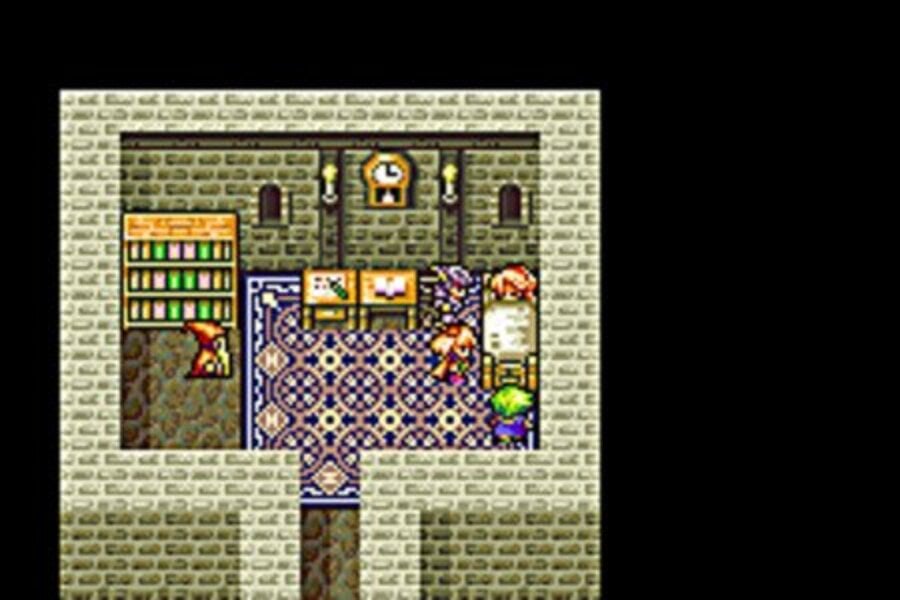
This is still one of the most Final Fantasy things out there today, and not many other RPGs have used the ATB system – Chrono Trigger, Parasite Eve, Grandia, and Child of Light are examples (and two of those are Squaresoft titles). But many 3D Final Fantasy games have used an iteration of it – XII’s Gambit system relies on order and cast time, and X-2 has different-length ATB bars depending on the job you’re playing as. If anything, the ATB system allowed other RPG developers to experiment with the turn-based system that had been long established at that point.
Final Fantasy V – Adventure and experiment
The middle child of the SNES trilogy might be the least innovative of the original six, but Final Fantasy V is still a pretty special – and pretty important – addition to the genre.
Before Final Fantasy IX, Final Fantasy V is the most iterative entry in the series – again returning to I and III’s job system, but instead letting you play as a group of established, named characters. It’s also maybe the most humble entry in the series, given that the main character Bartz isn’t some grand hero (though there are some heritage things going on) but is just an adventurer having fun with his best pal, Boco the Chocobo.
Bravely Default, Octopath Traveler, Fantasy Life, and many more games owe Final Fantasy V for their excellent job systems.
Let’s go back to the job system again, though, because if I established it and III improved on it, then V is the definitive job system in the series. Bravely Default, Octopath Traveler, Fantasy Life, and many more games owe Final Fantasy V for their excellent job systems. Even 30 years after its release, Final Fantasy V’s level of customisation and freedom with its job system is excellent, allowing you to not only swap between classes whenever but also enabling you to cross-equip skills between classes as you level them up. So this time, if you really wanted to, you could play the game with four Geomancers, and it would be totally viable. Earth bells for days, right?
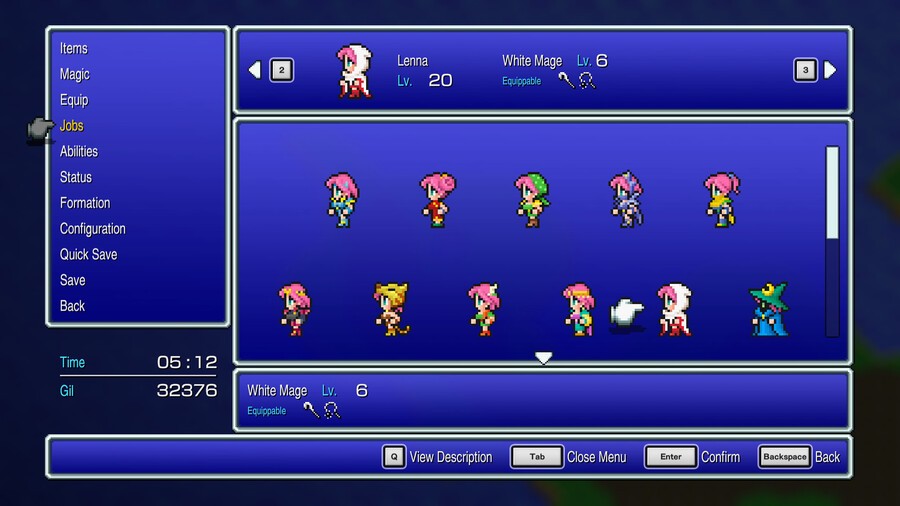
Really, though, for the first half of the game, Final Fantasy V is pretty cosy. Dragon Quest always felt (and still does) like the cosier series, though that franchise pretty much found its footing here. Final Fantasy V turns away from the darker narratives of II and IV and swaps them for a heartfelt game about exploration and adventure. At least until you have to fight the big tree at the end.
Final Fantasy VI – But what if we lost?
Okay, my goodness, where do I start with Final Fantasy VI?
There’s still nothing really like Final Fantasy VI out there. An RPG with no real definable main character (though it’s totally Terra Branford). A huge playable cast, each of whom (*coughcoughUmarocough*) has a strong backstory. A JRPG where there are choices that can permanently alter your party make-up? Oh, and you lose about halfway through the game.
It’s all about triumph over adversity, and hope prevailing over despair.
Final Fantasy VI is often hailed as one of the best in the series, and for many, many reasons. It’s all about triumph over adversity, and hope prevailing over despair. The world is literally ripped apart in front of your eyes at the halfway point, and you (Celes Chere) are left to fend for yourself and find your friends. Friends who you’ve spent 15 or so hours with, who you think you understand and know everything about. But you don’t. The second half of the game is about showing you that, and then you’ll understand everything that they did in the first half of the game even more than before.

That is if you want. What makes Final Fantasy VI so unique is that it’s about freedom and choice. The first half of the game splits you between three different parties (for the most part) until all three sides come together to join The Returners, a rebel group looking to take down the Empire. But when you take control of Celes in the World of Ruin, you’re only required to meet up with two other party members. In fact, if you really want, you can go and take on the final boss with just Celes, Edgar, and Setzer. But then you’d miss out on Terra’s existential crisis. Or the reason why Locke wants to save everyone. Or that the beast child Gau’s father is still alive. Squaresoft created a game where everyone feels important. Every single character has weight to them – and how many other games can you say have that?
What makes Final Fantasy VI so unique is that it’s about freedom and choice.
Not only can you go wherever you want and recruit whoever in what order in the World of Ruin, the Magicite system means that you can customise characters more than ever before. Edgar might be a proto-Machinist armed with a crossbow, a chainsaw, and a drill, but he can also be a magician who specialises in debuffing enemies. Or what about Locke, a super-fast thief who can mug the enemies and heal the party?
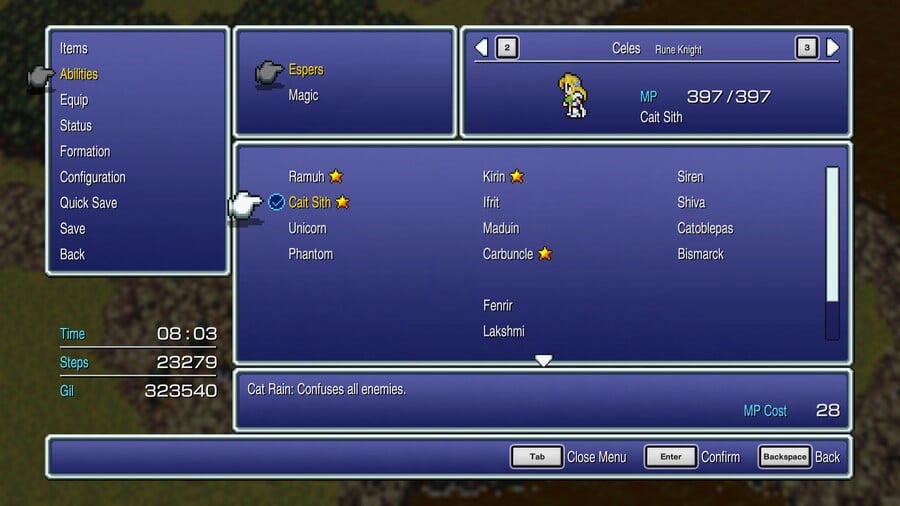
Anyone can be anything, even with their pre-established roles, and for the first time in the series, you can pick your own party and not just rely on the characters you’re given. You can mould the team to fit your preferences. Quietly, that’s the biggest thing Final Fantasy VI brings to the table – not only is it a game about hope, choice, and change, but it lets you experience and do all of those things yourself.
The Final (Fantasy)
Final Fantasy’s innovations might have been more subtle in the NES and SNES days, but they were absolutely there. You can see how each of these six entries has not only influenced this series, but also other RPGs – even though it was through dialogue with Enix’s Dragon Quest series for a time.
no two entries are entirely alike, even when they’re improving on one another
Dragon Quest, now under Square Enix, certainly settled into a rhythm around the time Final Fantasy really started branching out. I personally play Dragon Quest to feel something very particular – something very warm and charming, and something that’ll make me smile. But Final Fantasy has so many different variations under its umbrella that it really depends on my mood. No two entries are entirely alike, even when they’re iterating and improving on one another (I and III, for example).
Nowadays, Final Fantasy isn’t seen as a ‘Nintendo’ franchise – which is strange because it was for so long. Squaresoft jumping ship to the disc-based PlayStation worked out well for the company, and Europe (and NA for some) eventually got all of those NES and SNES games that originally didn’t launch in English as a result. So that’s got to be a win, right?
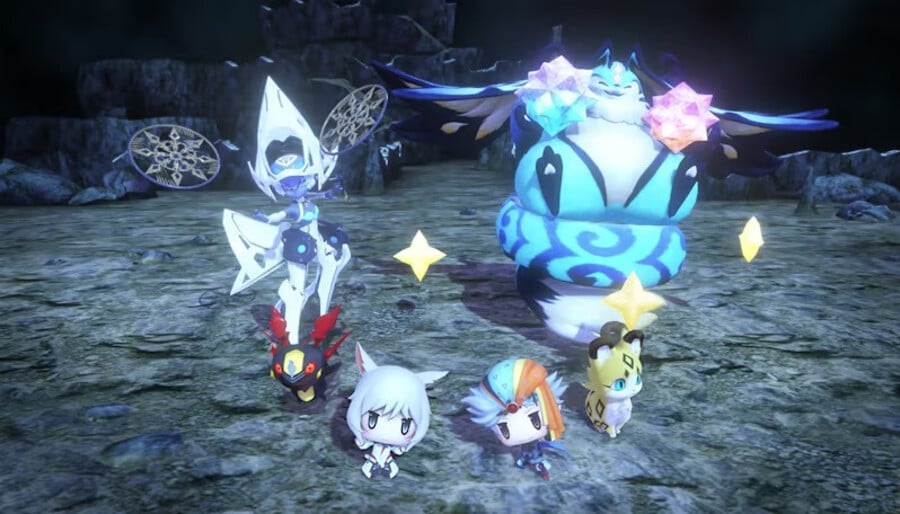
Nintendo, at this point, has become the home of spin-offs or the classic turn-based Square Enix games like Bravely and Octopath. Heck, even Dragon Quest feels very at home on Switch. This makes the Switch a nice little console to get into the series – either by picking up one of the many Switch remasters, or by checking out a cute spin-off like World of Final Fantasy (which, hey, if you want turn-based Final Fantasy, there you go!). And the arrival of the Pixel Remaster collection has finally been confirmed, too.
Innovation is part of Final Fantasy’s identity. That’s especially true now given that the PS5’s Final Fantasy XVI is an action RPG, but it has also always been true. What’s consistent, though? Well, Cid, chocobos, moogles, certain weapons, armour, and a handful of other things. Writing for Kotaku, Jason Schreier put it beautifully: “Final Fantasy is defined by how it sounds… The chime of a menu cursor. The squeal of an NPC’s dialogue box. The thunderous jolt of a random encounter”. Theatrhythm Final Bar Line should help drive that point home.
Final Fantasy is whatever it wants to be. It always has been, and it always will be. What number will we be at in another 35 years? Who’s to say (probably XXX!), but no one can predict what direction Square Enix will go in next.
Here’s to there never being a final Final Fantasy.




